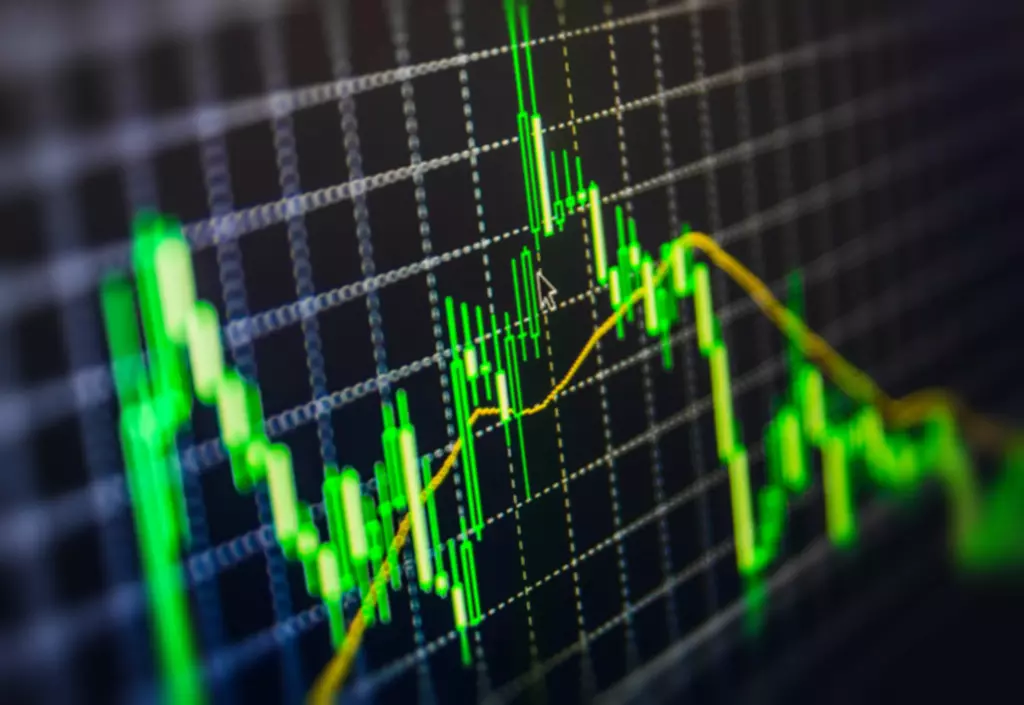Content
- Identifying Rising and Falling Wedges Using Technical Indicators and Tools
- Identifying Rising and Falling Wedges
- Advantages of Trading Rising and Falling Wedges
- How do we identify a falling wedge pattern?
- How Reliable Are Rising Wedges?
- USD/CHF Price Analysis: Technical outlook
- Technical Analysis – Wedges
- USD/JPY: Yen jumps on reports of more flexible inflation target
Trading foreign exchange on margin carries a high level of risk, as well as its own unique risk factors. Falling Wedges often come after a climax trough (sometimes called a « panic »), a sudden reversal of an uptrend, often on heavy volume. In this case, price within the Falling Wedge is usually not expected to fall below the panic value, ending up in breaking through the upper trendline. During the pattern formation, volume is most likely to fall; however, better performance is expected in wedges with high volume at the breakout point. There are many different chart patterns that technical traders leverage in making informed trading decisions; this includes the Wedge Patterns.

This took a toll on equities, with the S&P down at one point by more than 27% this year. FCX provides a textbook example of a falling wedge at the end of a long downtrend. A closer look at the 4-hour chart shows that DXY seems to be trading within the boundaries of a Falling Wedge chart formation. If the latter holds, we may continue seeing the US Dollar aim cautiously lower as the floor and ceiling guide the instrument downward.
Identifying Rising and Falling Wedges Using Technical Indicators and Tools
In the Gold chart below, it is clear to see that price breaks out of the descending wedge to the upside only to return back down. This is a fake breakout or “fakeout” and is a reality in the financial markets. The fakeout scenario underscores the importance of placing stops in the right place – allowing some breathing room before the trade is potentially closed out. Traders can place a stop below the lowest traded price in the wedge or even below the wedge itself. Of course, it is not possible to know right from the start that the market is forming a wedge.

Therefore, if you have a strategy to trade them, they can provide a good number of trading opportunities. Fibonacci Extension Levels are a powerful way to determine potential areas on the price chart of a security up to which the price wave is likely to continue after the breakout from the Wedge Pattern. Hence, these levels can provide you with a powerful way of determining the take profit targets for your trades.
Identifying Rising and Falling Wedges
Now, in the following sections, let us briefly discuss how you would integrate these above-stated tools into your strategy to trade the Wedge Pattern. During this development phase of the pattern, there is substantial trading activity in the market, indicating a strong selling or buying interest in the asset. At its core, the market forces leading to the development of a Falling Wedge Pattern are similar, but opposite, to the market forces that lead to the development of the Rising Wedges. Now that we have already covered the interpretation of the Rising Wedge Pattern, understanding the formation of the Falling Wedge Pattern should be relatively easy. Contrarily, with a Rising Wedge, the breakout would occur below the lower trendline. Contrarily, in the case of a Rising Wedge Pattern, this trendline exhibits a slope that is lower than the lower trendline.
- Bearish and bullish patterns in the market are detected through a wedge.
- Hence, by using a Candlestick Chart, you can make the process of identifying a potential Wedge Pattern much simpler.
- The author has not received compensation for writing this article, other than from FXStreet.
- Some studies suggest that a wedge pattern will breakout towards a reversal more often than two-thirds of the time, with a falling wedge being a more reliable indicator than a rising wedge.
- These readings can be leveraged to confirm that the pattern that you are looking at is in fact a Wedge Pattern.
Therefore, it will show you both the direction and the magnitude of the volume change, which are both crucial in identifying the Wedge Patterns. In a Rising Wedge Pattern, this trendline https://xcritical.com/ has a higher slope than the upper trendline. Moreover, with a Rising Wedge Pattern, it is this trendline through which the price breaks once the pattern construction is complete.
Advantages of Trading Rising and Falling Wedges
Wedges are considered very reliable in most trading communities and are counted among the most popular chart patterns. Plus, to the eyes of an experienced pattern trader, Wedges are easy to identify and simple to trade. That being said, to the novice, trading and identifying this pattern requires some discovery first. Usually, a rising wedge pattern is bearish, indicating that a stock that has been on the rise is on the verge of having a breakout reversal, and therefore likely to slide. Going back to the weekly chart, that longer-term falling wedge remains in-place.
The lines show that the highs and the lows are either rising or falling at differing rates, giving the appearance of a wedge as the lines approach a convergence. Wedge shaped trend lines are considered useful indicators of a potential reversal in price action by technical analysts. Some studies suggest that a wedge pattern will breakout towards a reversal more often than two-thirds of the time, with a falling wedge being a more reliable indicator than a rising wedge. While this article will focus on the falling wedge as a reversal pattern, it can also fit into the continuation category. As a continuation pattern, the falling wedge will still slope down, but the slope will be against the prevailing uptrend.

A confirmatory break under the latter could be a clear-cut tipping point for the US Dollar that opens the door to reversing what has been a generally strong year for the currency. Both the near-term 20- and 50-day SMAs remain pointed lower after the bearish Death Cross in November. These may come into play as key resistance in the event of a turn higher.
How do we identify a falling wedge pattern?
As the pattern develops further, a flurry of bullish traders continue to enter the market, increasing the pressure on the short-sellers of the security even further. This trend continues until the market gets fully saturated and is oversold, at which point a bullish breakout occurs. In essence, this bullish breakout marks the completion of the Falling Wedge Pattern. Consequently, many traders that hold the security gradually begin to close their positions with the objective of either booking profits or to protect any further losses on their trades. Moreover, the trading activity in the market considerably reduces during this phase. Furthermore, in the case of a prevalent uptrend, short-sellers also begin to rush to the market at this stage.
That is, most of the times, as there is one instance that calls for a rising wedge to have a bullish outcome and a falling one to have bearish follow-through price action. Trading stocks, options, futures and forex involves speculation, and the risk of loss can be substantial. Clients must consider all relevant risk factors, including their own personal financial situation, before trading.
Connecting the lower highs and lower lows will reveal the slight downward slant to the wedge pattern before price eventually rises, resulting in a falling wedge breakout to resume the larger uptrend. The falling wedge pattern is interpreted as both a bullish continuation and bullish reversal pattern which gives rise to some confusion in the identification of the pattern. Both scenarios contain different market conditions which must be taken into consideration. Although the index continued to move lower, we exited the position and started looking for other rising wedge patterns.
At the beginning of this pattern’s formation, the market is defined in a particular trend. As discussed in the previous sections, in the case of a Rising Wedge Pattern, this prevailing trend is generally bullish. But, on rare occasions, Rising Wedges can also be preceded by a bearish price trend. When the price breaks the upper trend line, the security is expected to reverse and trend higher. Traders identifying bullish reversal signals would want to look for trades that benefit from the security’s rise in price. The patterns may be considered rising or falling wedges depending on their direction.
The only way to differentiate a true rising wedge from a false one is by finding price/volume divergences and to make sure that the failure is still under the 50% Fibonacci retrace. A wedge pattern is commonly formed when securities, stocks and assets are being traded in the market. As depicted on a wedge pattern, a sustained upward movement in the prices of assets or securities is always followed by a reversal, the reversal however occurs at the peak. When there is an upward movement on the wedge pattern, it indicates a bullish market, the point of reversal is however a bearish pattern. Short selling, margin borrowing, among others are the major trends of a bearish trade.
How Reliable Are Rising Wedges?
Or, perhaps we have a redux of this year, where stocks find their high in the opening week before undergoing a directional change of some type. The US Dollar was mostly little changed this past week, but most notably, the Greenback struggled to hold onto gains accumulated on Monday and Tuesday. That could perhaps hint at what has been an evolving downtrend since the end of September. In fact, the US Dollar is heading for the worst quarter since the summer of 2010. Even though the consensus is for no policy changes, the prospects for the yen have started to improve heading into a potentially stormy year.
USD/CHF Price Analysis: Technical outlook
The Rising and the Falling Wedges are both characterized by several structural components. You can leverage these structural components to identify and to confirm Wedges on the price chart of a security. As its name may have already indicated, in the Rising Wedge Pattern, the trendlines are both sloping upwards while converging at the same time.
Technical Analysis – Wedges
For beginners, Wedge Patterns could be tricky to identify due to their structural similarities with other chart patterns such as Triangles and Pennants. This target is in line with our prediction that the market will consolidate after the breakout. Therefore, in comparison to many other price chart types, identifying the upper and the lower trendlines, and hence the Wedges, becomes much simpler when leveraging a Candlestick Chart. The Wedge Pattern, similar to all other trading tools, comes with its own set of limitations.
Now, let us zoom in on the 4-hour chart for a better idea of what we could expect in the coming week. The author makes no representations as to the accuracy, completeness, or suitability of this information. FXStreet and the author what does a falling wedge indicate will not be liable for any errors, omissions or any losses, injuries or damages arising from this information and its display or use. Price Data sourced from NSE feed, price updates are near real-time, unless indicated.
The Wedge Patterns, or Wedges, are chart patterns that last 10 to 50 trading sessions and that frequently appear on the price chart of a security. In these patterns, the highs and lows of price converge to move towards each other to form a triangular-shaped structure. Based on orientation, there are two popular types of Wedges, namely – the Rising Wedge and the Falling Wedge. Traders can put a stop loss below the lowest traded price in the wedge or even below the wedge if it suits their risk profile.
Due to this, the pressure on buyers for the security increases further and the market becomes overbought. During this phase, as the prevailing trend proceeds, more and more traders begin to grow skeptical about the existing sentiment for the security. Wedges have a distinguishable structure, making it simple to identify them with some practice. However, identifying them could be made even simpler by leveraging several technical indicators and technical analysis concepts. Irrespective of the Wedge Pattern type, be it the Rising Wedge or the Falling Wedge, the trading volume declines as the convergence occurs and it spikes to accommodate the breakout when it happens. During the development of the Wedge Pattern, the upper and the lower trendlines begin to contract towards each other.
